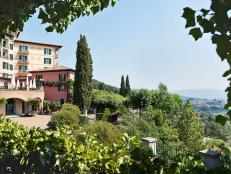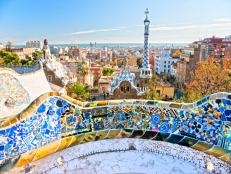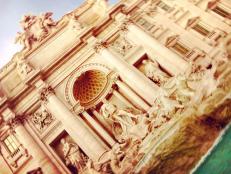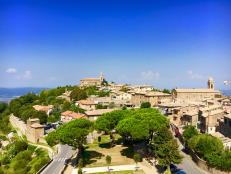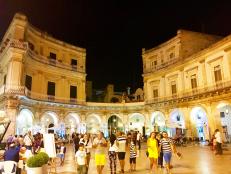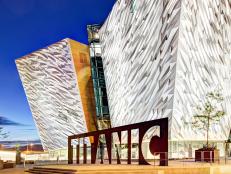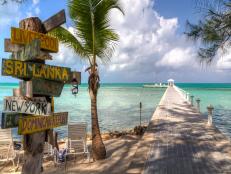Dig Into Italy's Medieval and Renaissance Wonders in Umbria and Le Marche
If there was any negative regarding the popularity of Italy's Tuscany region, it might be that its shining-star status has left neighboring regions of Umbria and Le Marche largely ignored by visitors. Of course, many locals would disagree, saying these regions remain blissfully unscathed by the effects of mass tourism.
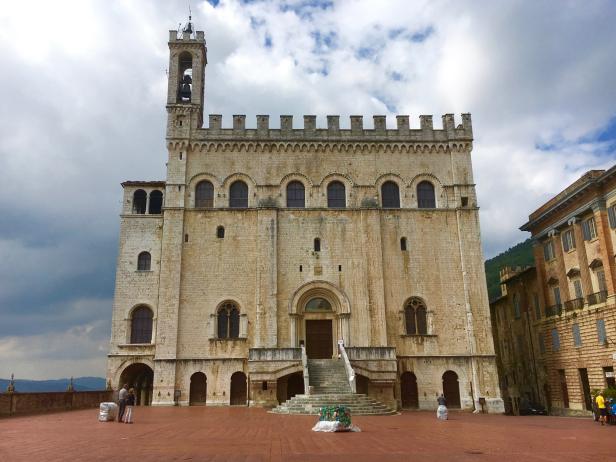
Valerie Conners
Still, it's a shame for such brilliant regions to remain unseen. With the exception of Florence's vast wealth of arts, Umbria rivals the best of Tuscany in terms of history and culture, and Le Marche stands alone for its extraordinary mountain landscapes.
Travelers willing to take the road less traveled and head into the Umbrian and Marche hills will be amply rewarded.
Where to Stay
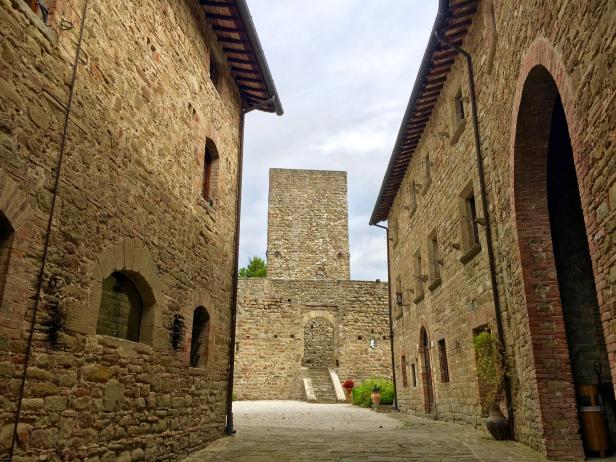
Valerie Conners
Tap into your inner princess, or (if you're not the princess type) channel a Game of Thrones moment -- in a 1,000-year-old castle tucked high into the Umbrian hilltops. Castello di Petroia allows you to live out your Medieval fantasies in a spectacular setting. The stone structure is adorned with flickering candelabras, tapestries and rich wooden furnishings, but the greatest allure might be the setting.
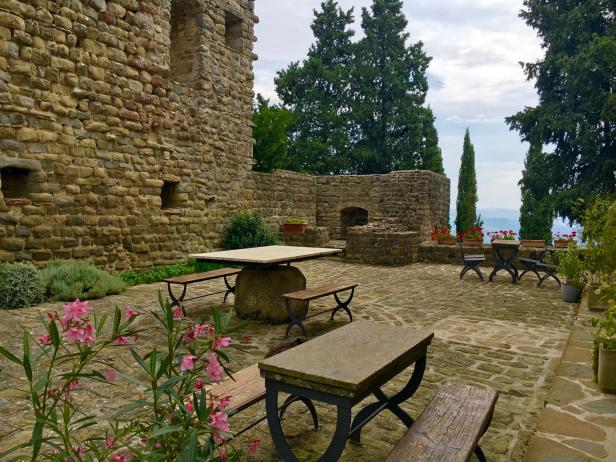
Valerie Conners
The castle's property encompasses 800 acres, including forests and farmlands. The property welcomes guests to stroll its hiking trails, ride horses or simply relax by the pool surrounded by nature. After dark, plan to eat at the hotel restaurant, where you will dine on the most remarkable homemade chicken liver pate with caramelized onions, and veal so tender it nearly dissolves in your mouth.
Once you're sated and ready to explore the regions, don't miss these excellent towns.
Gubbio
Visitors who venture into Umbria, but hope to stretch their travel chops beyond the mainstays of Puglia, would do well to pop into Gubbio, a magical, Medieval town which stretches up the slope of Mt. Ingino. Known as the "City of Fools," Gubbio is a quirky stop on a tour of the region's lesser-known gems. The tiny town takes little time to explore, but packs a wallop with its interesting sights and history, postcard-worthy panoramas of the surrounding countryside, and even an aerial tour -- for those who leave their fear of heights at home.
Start your visit by trekking up the Via Piccardi, toward the town's higher points, until you reach the Piazza Grande, where you'll find the remarkable Gothic-style Consuls Palace (Palazzo dei Consoli). While the views of the sprawling environs are a worthy distraction, take time to stop inside the 14th-century palace and visit its art gallery, and archaeology and civic museums. Gape at the Eugubine Tablets, a collection of seven bronze plaques which date back to the second century BC.
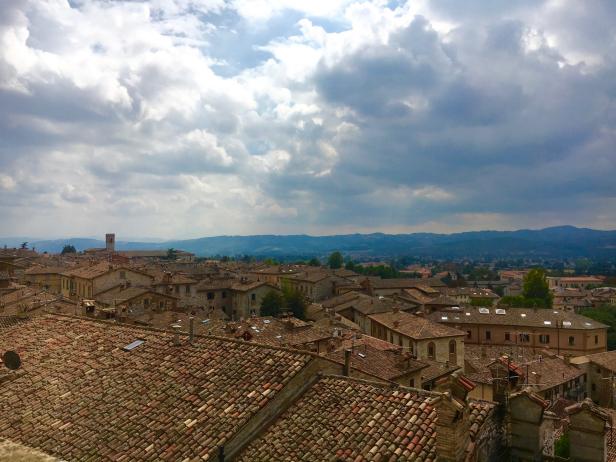
Valerie Conners
Keep heading skyward, toward the 13th-century Duomo church and admire its stained glass windows, intricately carved throne and Roman sarcophagus. Be sure to stop in the Palazzo Ducale, the 15th-century palace built for the Duke of Urbino.
Sated by history, it's now time to fill your belly with the town's special bread. Called crescia, this flatbread is used for sandwiches often made with local ham and cheeses. Want to stretch your purse strings and pick up souvenirs? The town is famed for its hand-painted ceramics.
Finally, head across town toward the Porto Romano, where you'll find an open-air cable car that will take you up Mount Ingino to the Abbey of Sant' Ubaldo, snapping photos of the extraordinary scenery from above the treetops.
Cagli
You can truly lay claim to heading off Italy's beaten track with a trip into the mountainous Marche region. Tucked into the jagged, green foothills of the Apennine mountains, Cagli is just a 30-minute drive from Gubbio and dates back to the Middle Ages. Even smaller than Gubbio, Cagli gives visitors the chance to dive into the nooks and crannies of a town largely untouched by mass tourism, and blissfully far off the tour bus circuit.
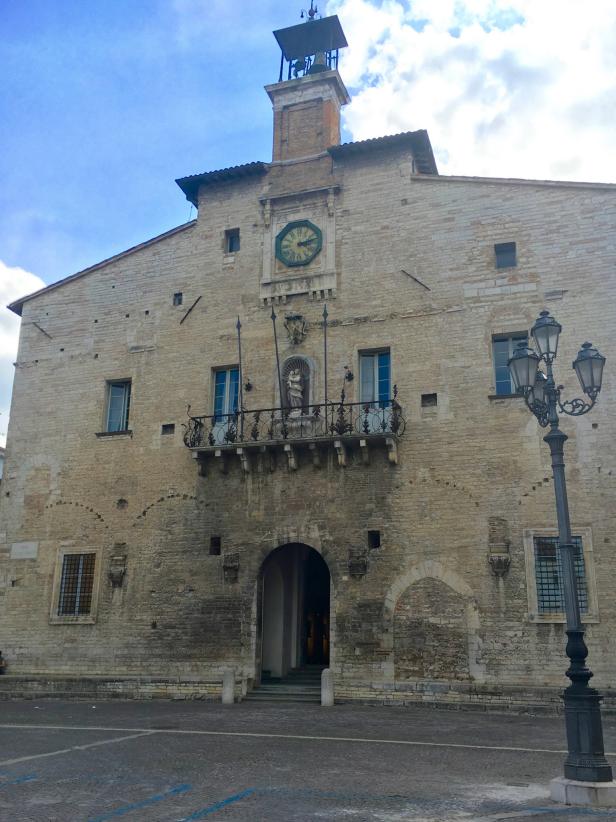
Valerie Conners
It won't take long to explore the sights, but plan to spend time soaking in the town's charming atmosphere. Stop by the town's imposing cathedral, then head toward the oval-shaped Rocca Torrione. Pay the entrance fee and receive a double bang for your Euro; the tower lays claim to both an interesting history that dates back to the 15th century, a secret passage, and today is home to the town's Centre for Contemporary Sculpture. Your ticket also gives you entrance into the town theater and opera house.
Unwind in the main square, Piazza Matteotti. Grab a table at Caffe del Commercio, order an espresso, and watch the quiet rhythms of a small town unfold before you. You'll be staring at the 13th-century Palazzo Pubblico, or town hall, and will soon discover its low walls are a favorite gathering spot for the town's older residents.
Urbino
Anyone who has merely dabbled in Renaissance art is familiar with the portrait of the Duke of Urbino with his distinctive profile and prominent nose. While the painting today is on display in Florence's Uffizi Museum, the stunning town once ruled by the Duke is more than worth a detour.
The walled town of Urbino was a former Renaissance capital in the 15th and 16th centuries, and today a tranquil hill town where every sloping street and alleyway seems to reveal one misty mountain scene more idyllic than the next. The town's former residents are a noteworthy bunch, including the great painters Raphael and Piero della Francesca, and the architect Laurana.
Life in Urbino seems to largely revolve around the Piazza della Republica, where university students crowd steps and cafes during the evening stroll, or passeggiata. The first stop on a visit to Urbino should be the town's primary attractions, the 15th-century Ducal Palace and the National Gallery.
You'll gape in awe at a collection that includes works by native son Raphael, Titian, and the aforementioned della Francesco. Take special note of the Duke's studio, paneled with inlaid wood and filled with books, instruments and other curios from his life.
Next, visit the town's cathedral which houses works by the Renaissance painter Barocci, then pay homage to Raphael's birthplace, today a small museum known as the Casa Natale di Raffaello.
Can't get enough of Le Marche's brilliant mountain vistas? Find the Parco della Resistenza, located opposite the Duke's palace. This small public park offers a welcome respite and offers fantastic views over Urbino's steep, twisting streets and red rooftops.
